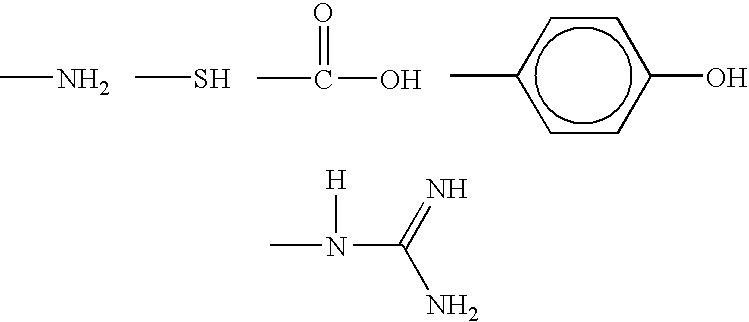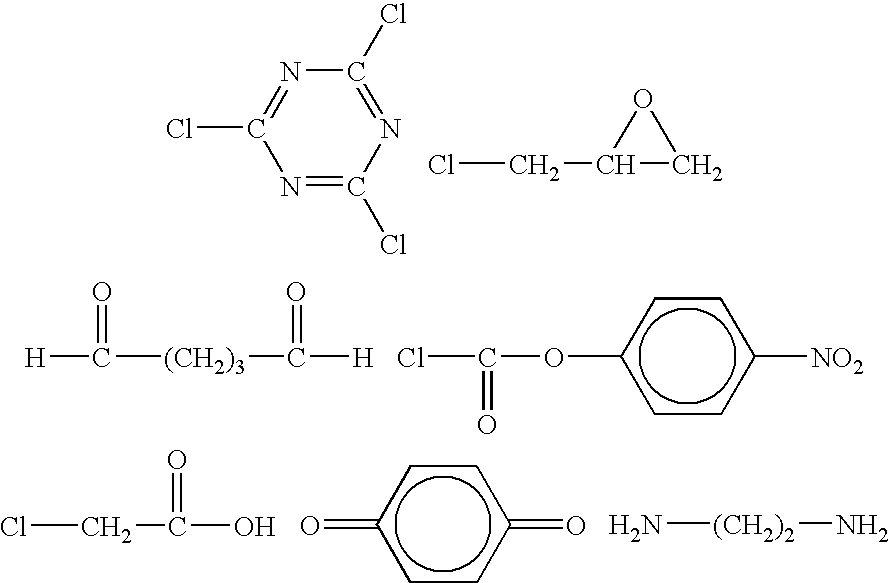Fibrous protein-immobilization systems
a protein-immobilization and fibrosis technology, applied in the field of fibrous protein-immobilization systems, can solve the problems of low catalytic efficiency and stability of enzymes, high cost, and high cost, and achieve high protein loading, reduced diffusion resistance, and high surface area
- Summary
- Abstract
- Description
- Claims
- Application Information
AI Technical Summary
Benefits of technology
Problems solved by technology
Method used
Image
Examples
examples
[0055]Samples of functionalized polystyrene were first synthesized in a manner well known in the art. In particular, polymerization of styrene was conducted in a 20 ml scintillation vial under N2. In a typical procedure, 0.1 g of 2-2′-azobis[2-methyl-N-(2-hydroxyethyl) propionanide (“propionamide”) was first dissolved into 4 ml N,N-dimethylformamide (DMF). The solution was then mixed with 5 ml styrene and 1 ml toluene. The vial was purged with N2 and incubated in water bath at 72° C. for 24 hours. The reaction was stopped via pouring the reaction solution into 50 ml of methanol to precipitate polystyrene. The precipitate was further washed by 25 ml methanol for at least 3 times to remove unreacted styrene and initiator. The molecular weight of polystyrene was measured by GPC using a PLgel MIXED column (Polymer Laboratories, MA) with chloroform as the mobile phase.
[0056]Polystyrene was then functionalized in a typical manner as follows. Typically, 0.5 g polystyrene and 12.2 mg 4(dime...
PUM
| Property | Measurement | Unit |
|---|---|---|
| diameters | aaaaa | aaaaa |
| diameter | aaaaa | aaaaa |
| pH | aaaaa | aaaaa |
Abstract
Description
Claims
Application Information
 Login to View More
Login to View More - R&D
- Intellectual Property
- Life Sciences
- Materials
- Tech Scout
- Unparalleled Data Quality
- Higher Quality Content
- 60% Fewer Hallucinations
Browse by: Latest US Patents, China's latest patents, Technical Efficacy Thesaurus, Application Domain, Technology Topic, Popular Technical Reports.
© 2025 PatSnap. All rights reserved.Legal|Privacy policy|Modern Slavery Act Transparency Statement|Sitemap|About US| Contact US: help@patsnap.com



